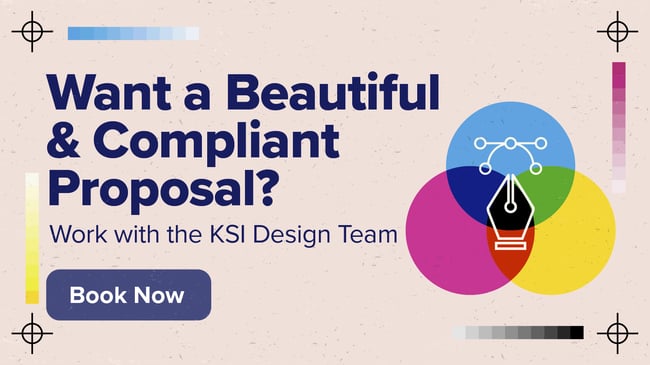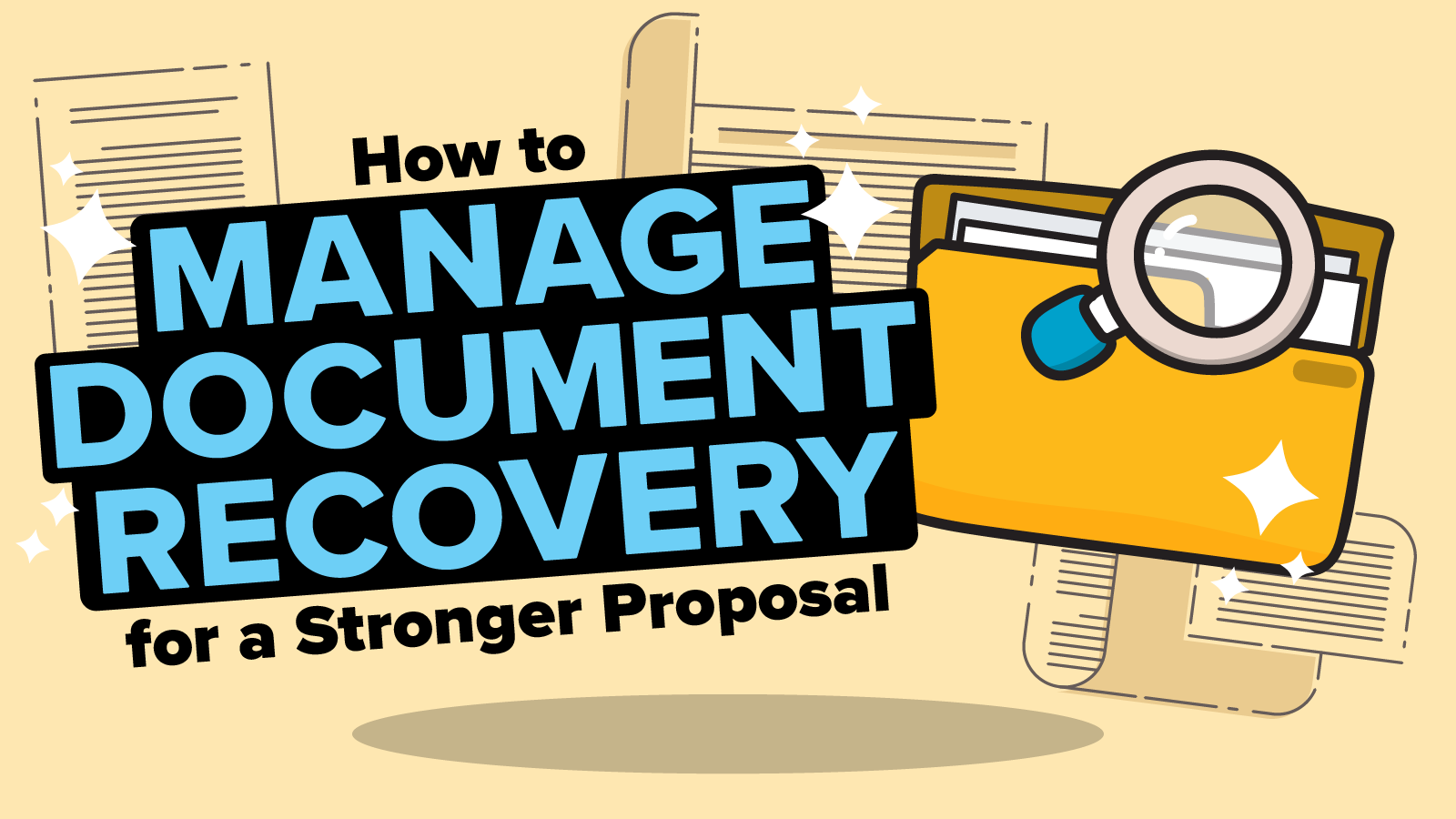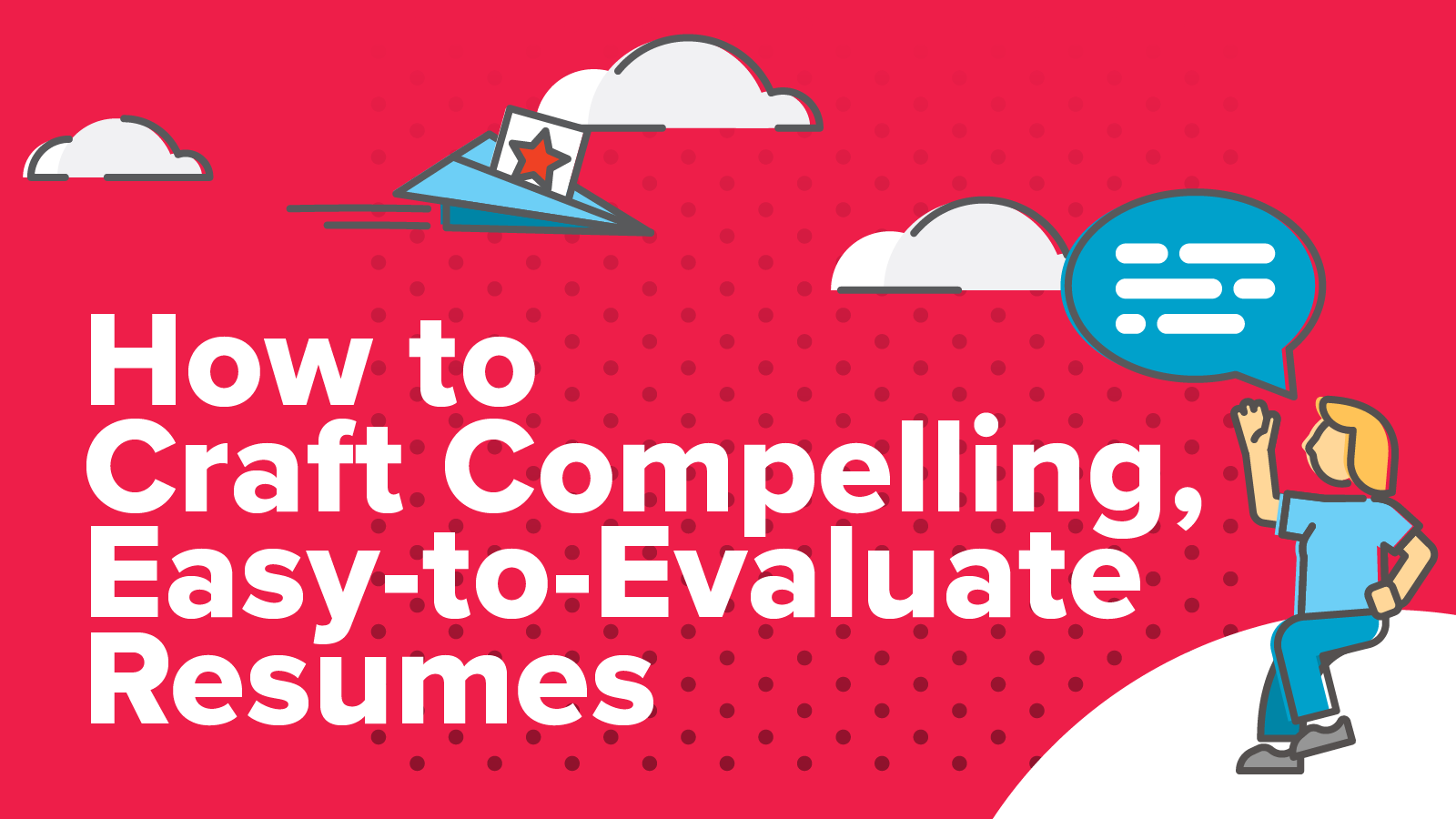
While it may not be immediately obvious, there is no doubt that the design of your government proposal can significantly impact how your response is received and has the potential to help you stand out from the competition.
Good design can help ensure that your submission is received positively, which in turn can increase your bid's win probability. In this article, we will discuss how government contractors can use design to create eye-catching proposals and sales materials!
Color Palette
First, it is essential to personalize your proposal based on your company's branding. An easy place to start is your company's brand style guide. Like a rulebook, a brand style guide explains how an organization presents itself to the world through its logo, font and color selections, photography, and more. This sort of consistency is key to building trust and creating brand awareness.
Unfortunately, some companies do not have a corporate brand guide. But there is no need to despair. You can still establish a design color palette by using the colors in your company logo as the primary group. Then, select four to five colors as your secondary group palette that complement or contrast with the primary ones, giving you a well-balanced palette. There are various tools online to help you select a color palette. Remember that a variety of colors is vital for large graphics with multiple sections and divisions that need to be clarified with additional colors.
Design and Templates Creation
Once you have created the color palette, it is time to make a graphics template! A graphics template is an easy reference sheet that contains:
- Company logo
- Primary and secondary colors
- Font requirements based on the RFP
- Graphic samples and arrows to show the colors selection and their order
Please see below for an example of a graphics template.
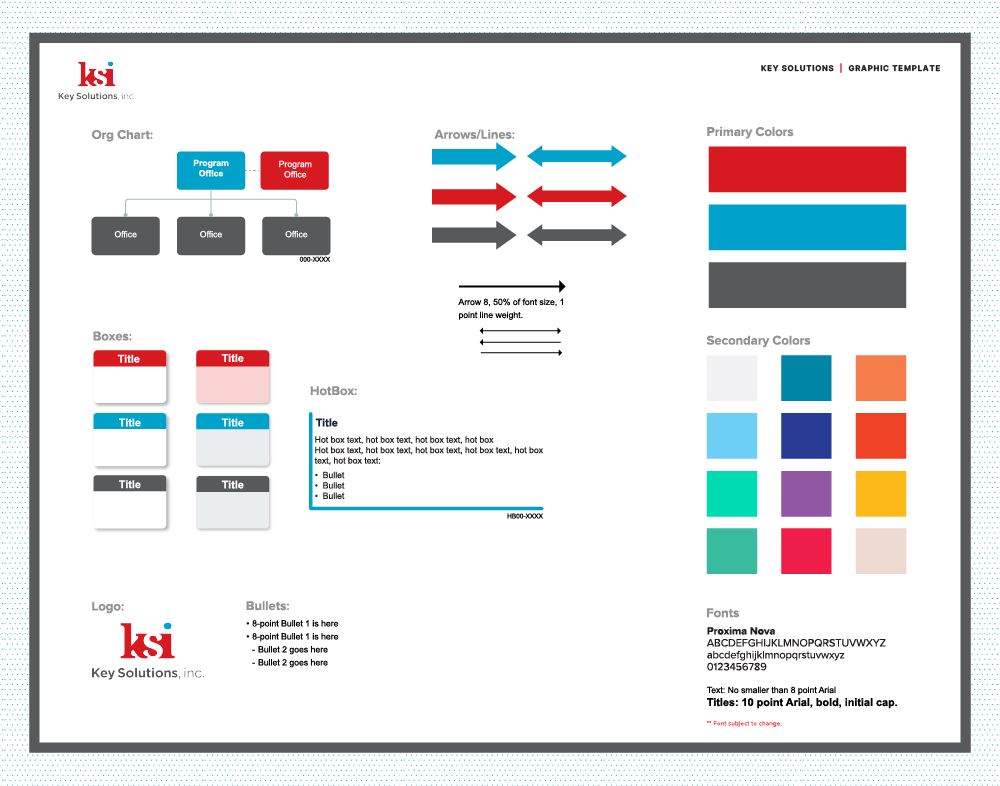
A graphics template is incredibly helpful since the primary and secondary color selections are used throughout the proposal and should be used consistently.
But what about your website, capabilities brief, or whitepaper? These are important tools to help market your firm to government decision-makers. The design for these materials should also be consistent.
Let's consider these additional areas where design can make a major first impression:
Website: Anything you publish on your website should align with your official branding or chosen color palette, as previously discussed. It should all feel connected. For example, if you create a landing page for a particular opportunity, like a Joint Venture (JV), the JV website or landing page must align with the proposal submission (colors and brand style guide).
Capabilities Brief: Typically, a capabilities brief is a one-page document that lays out your company's competencies and includes a capability statement. Think of it as a company resume. These typically do not have formatting requirements like an RFP, so the design possibilities are flexible, and your company has the chance to create eye-catching visuals that also convey your strengths to the customer.
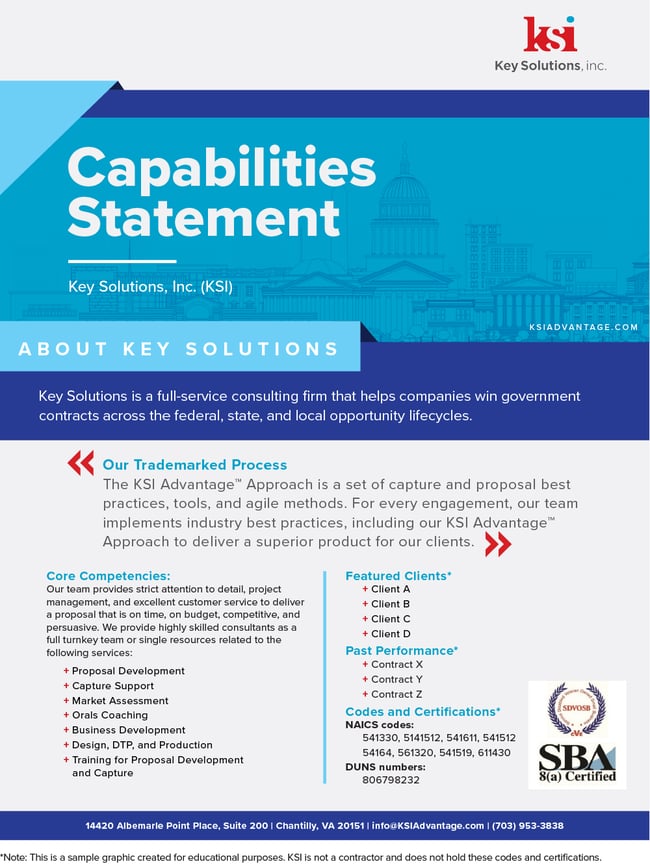
White Paper:
This includes your company's capability statement and a thorough presentation of a potential issue and/or proposed solution that would benefit your customer. Again, formatting and design requirements are typically not included (very little, if any), which opens the design potential for white papers. A white paper design should align with the company website and capabilities brief. Below is an example of a KSI white paper template with a cover page, table of contents, and pages with text and graphics. The colors align with the KSI color palette.
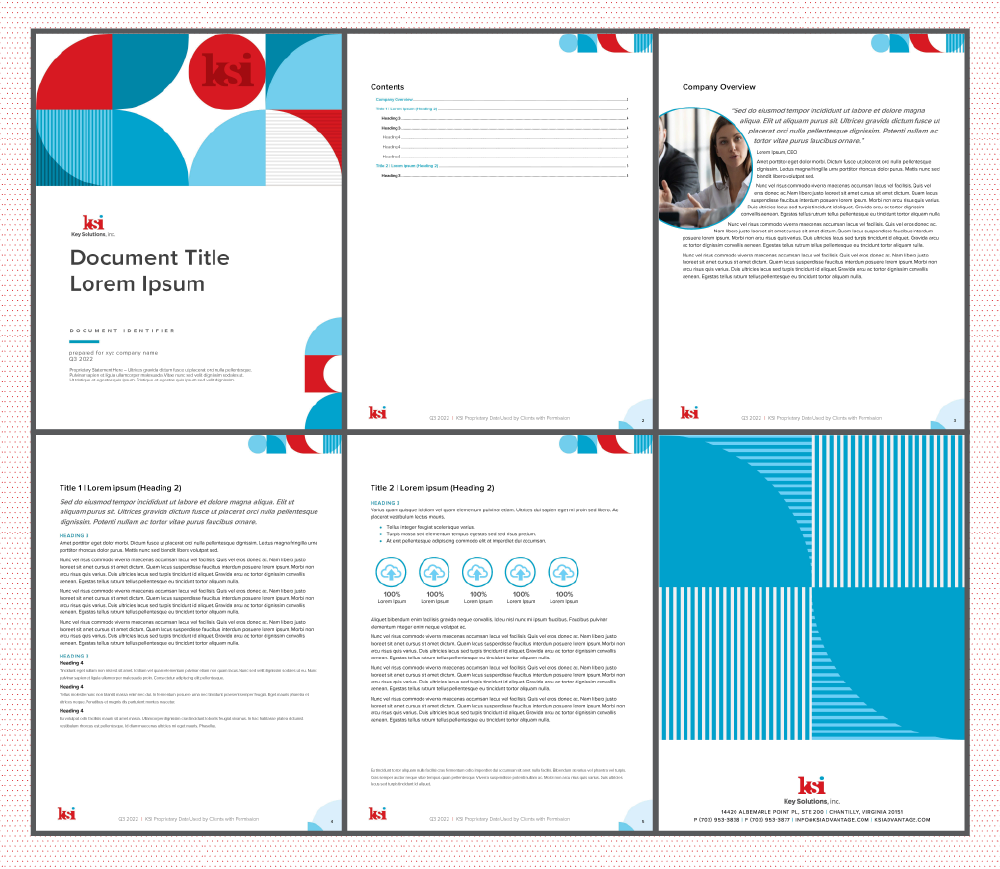
A uniform design is important when presenting your capabilities to a government customer. Having a standard, company-approved templates for your capabilities brief, white paper, proposal covers, and writing templates ensures visual consistency and increases brand awareness. It helps to create a professional and cohesive look and feel for your offering to the customer, establishing additional confidence in your submission.
Covers: Once the templates have been created, it is time to develop the proposal cover and title page. This includes binders, spines, and tabs if the proposal is a hardcopy submission.
The cover should be based on the graphic template style, colors, and requirements – again focusing on a cohesive presentation. The cover should also include the company's logo and an opportunity-specific design.
If you decide to include photos in the proposal cover design, it is important to research the image you are using for legal copyrights. Never select an image from Google or other search engines. Below is an example of a proposal cover that uses a stock photo of a building.
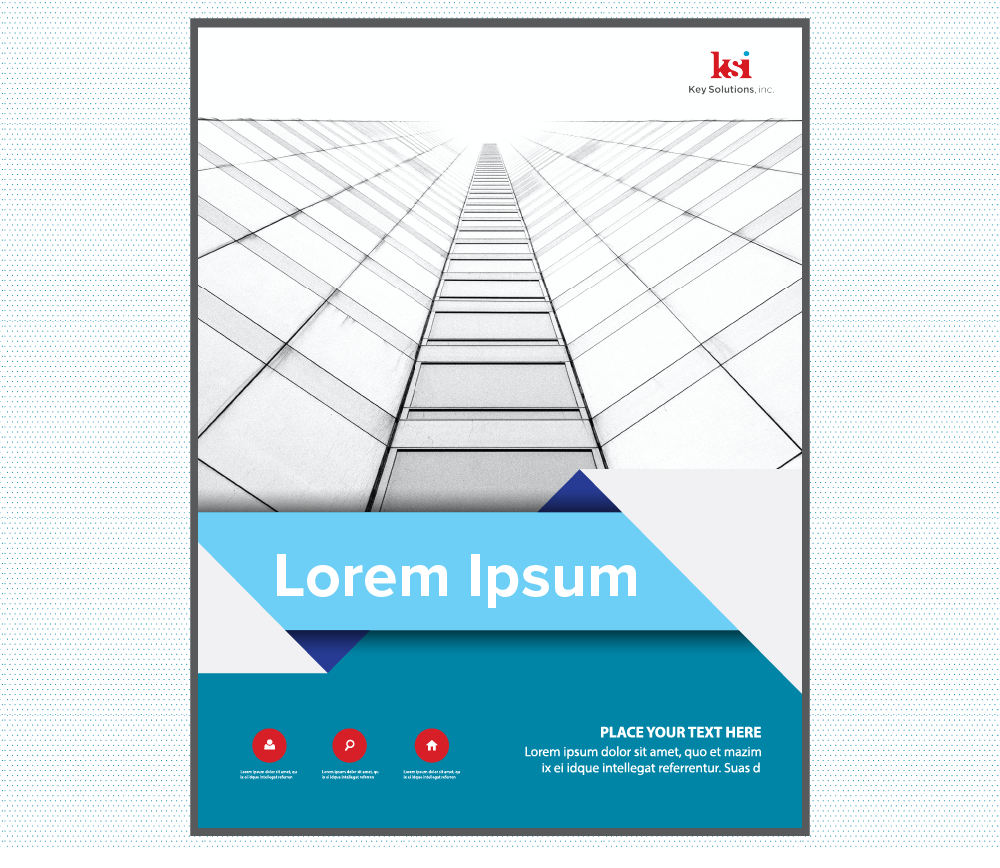
If you decide that a standard company cover is most appropriate for your proposal, create a neutral design that can be used for multiple purposes and bid opportunities. It is easier to use a proposal cover across multiple opportunities if the theme is neutral.
If the proposal requires a hardcopy or print submission, covers, spines, and tabs will be printed and inserted into the required number of binders. A hardcopy title page is an exact copy of the binder proposal cover, but it is used as the first page of the proposal (inside the binder) and includes a disclosure statement.
When printed submissions are requested, it is common for the customer also to require a CD or thumb drive. For your CDs and thumb drives, create labels that align with the proposal design and meet all labeling requirements in the RFP.
Conclusion
You’ve probably heard the expression, “never judge a book by its cover.” Unfortunately, "judging a book by its cover" is human. The choices you make about your design can help build trust with your target consumer, or it can alienate them.
Good design inspires a positive emotional response. A modern, creative, and cohesive proposal will convey the quality of your offering and the significance of the opportunity to your company.




